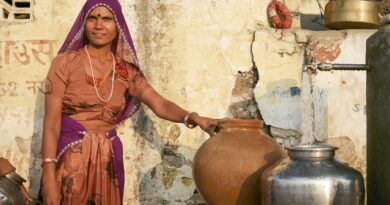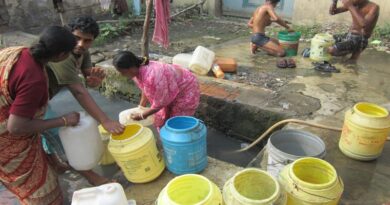NGT directs Delhi to constitute SPV for Yamuna rejuvenation

The National Green Tribunal (NGT) has directed the Delhi Development Authority to constitute a special purpose vehicle (SPV) for undertaking rejuvenation of Yamuna river even as reports have emerged of Ganga and Yamuna river water quality improving dramatically in several places amid the national lockdown imposed in the wake of the Covid-19 pandemic.
The green tribunal recently said the proposed special purpose vehicle will, among other things, look into ecological restoration of flood plain zones, setting up of bio-diversity parks, artificial wetlands, phyto-remediation of drains at the river mouth locations, maintaining vigil and undertaking flow measurement, creating ecological services, removing encroachments and undertaking other activities, including river front development.
The NGT also directed the Delhi, Haryana and Uttar Pradesh governments to take expeditious action on sewage management, industrial pollutants and solid waste being discharged into the river.
“It may also take steps to attract and educate citizens and nature enthusiasts for nature-related activities, including building environmental temper amongst the citizenry without in any manner causing any damage to the flood plain,” said a bench headed by NGT Chairperson Justice Adarsh Kumar Goel.
The green tribunal said the Central Pollution Control Board (CPCB) may issue notice to entities accountable to pay compensation and in case of non-payment seek execution by moving this tribunal.
The Delhi Government has also been directed to set up an “Integrated Drain Management Cell” (IDMC) under the Chief Secretary for remediation and management of all drains of Delhi with representatives of all agencies, departments and urban local departments owning such drains.
“The CEO of DJB will be the ex-officio member secretary of the IDMC. The IDMC may meet at least once a week, to start with. Constitution of IDMC will not affect ownership of the drains. IDMC may send its reports to this tribunal every two months by e-mail,” the bench said.
Meanwhile, the lockdowns announced by the Central Government due to Covid-19 situation has resulted in drastic improvement in water quality in the Ganga, Yamuna and several other rivers. The improvement is mainly due to the absence of untreated sewerage discharge in the rivers as all industrial units had remained shut for several days.
In Uttar Pradesh and Uttarakhand, authorities have reportedly said the quality of water in the Ganga has improved during the lockdown, with samples collected by a research facility in Varanasi recording a nearly 30 per cent decrease in pollution levels.
IIT-BHU Professor (Chemical Engineering & Technology) Dr PK Mishra, was quoted as saying in a news report that the water in Ganga has improved by 40-50 per cent as these industries are not operating.
“One-tenth of the pollution in Ganga River comes from industries, as industries are shut due to lockdown, situation has become better. We’ve seen 40-50 per cent improvement in Ganga, it’s a significant development,” Mishra said.
A news report in the Hindustan Times said a study of Ganga water samples collected on March 24, before the lockdown was imposed, and those collected on April 20, showed pollution had decreased by 25-30 per cent, said Mahamana Malviya Research Centre for Ganga, River Development and Water Resource Management Banaras Hindu University (BHU) chairman BD Tripathi.
According to the news report, samples were collected from five locations in the river, at Shooltankeshwar Ghat, Samne Ghat, Asi Ghat, Dashashwamedh Ghat and Raj Ghat, on the two dates.
“We tested biochemical oxygen demand (BOD) and the dissolved oxygen (DO) level in the samples. We found the concentration of DO increased by 20-30 per cent and the concentration of BOD decreased by 35-40 per cent. In total, the Ganga pollution load has decreased by 25-30 per cent,” Tripathi said.
With the lockdown, not only the water quality of Ganga but other rivers including the Yamuna has improved significantly in areas with reduced industrial activities.
A recent Delhi Pollution Control Committee (DPCC) report submitted to the Yamuna Monitoring Committee (YMC) has attributed the improvement in water quality to absence of industrial effluents and reduced human activities.
The Central Pollution Control Broad (CPCB) said a report in April 2020 that the main sources of water pollution in the river are industrial effluents and the domestic wastewater.
Initially, the report said, the improvement was marginal due to heavy rains resulting in the increased runoff, but a substantial increase was noted from the second week onwards reaching saturation value at various locations.
A Government statement said all the requirements of sewage treatment infrastructure in 10 towns have been fully addressed. These towns – Haridwar, Kanpur, Allahabad, Farrukhabad, Varanasi, Patna, Bhagalpur, Kolkata, Howrah & Bally – contribute almost 64 per cent of present sewage generation along Ganga main stem.
A Jal Shakti Ministry officials said due to various pollution abatement initiatives taken up so far under the Namami Gange Programme, the water quality assessment of Ganga in 2019 has shown improved water quality trends as compared to 2014.
The dissolved oxygen levels have improved at 27 locations, biological oxygen demand (BOD) levels and faecal coliforms levels have also improved at 42 and 21 locations, the official said.
Under the Namami Gange programme, as many as 310 projects have been sanctioned for various activities such as sewerage infrastructure, ghats & crematoria, river front development, river surface cleaning, institutional development, biodiversity conservation, afforestation and rural sanitation at a total cost of Rs 28,790 crore.
Out of these 310 projects, 116 projects have been completed and the remaining projects are at various stages of execution.
A total of 152 sewerage infrastructure projects have been sanctioned across Uttrakhand, Uttar Pradesh, Bihar, Jharkhand, West Bengal, Delhi, Haryana and Himachal Pradesh till date to create or rehabilitate 4857 MLD sewage treatment capacities and sewer network of 4972 Km at a cost of Rs 23,305 crore along the Ganga and its tributaries.
Out of 152 sewerage infrastructure projects, 46 projects are completed, 75 projects are under progress and 31 projects are under various stages of tendering. The completed projects have created 632 MLD sewage treatment capacity and are presently in operation, said an official statement.



